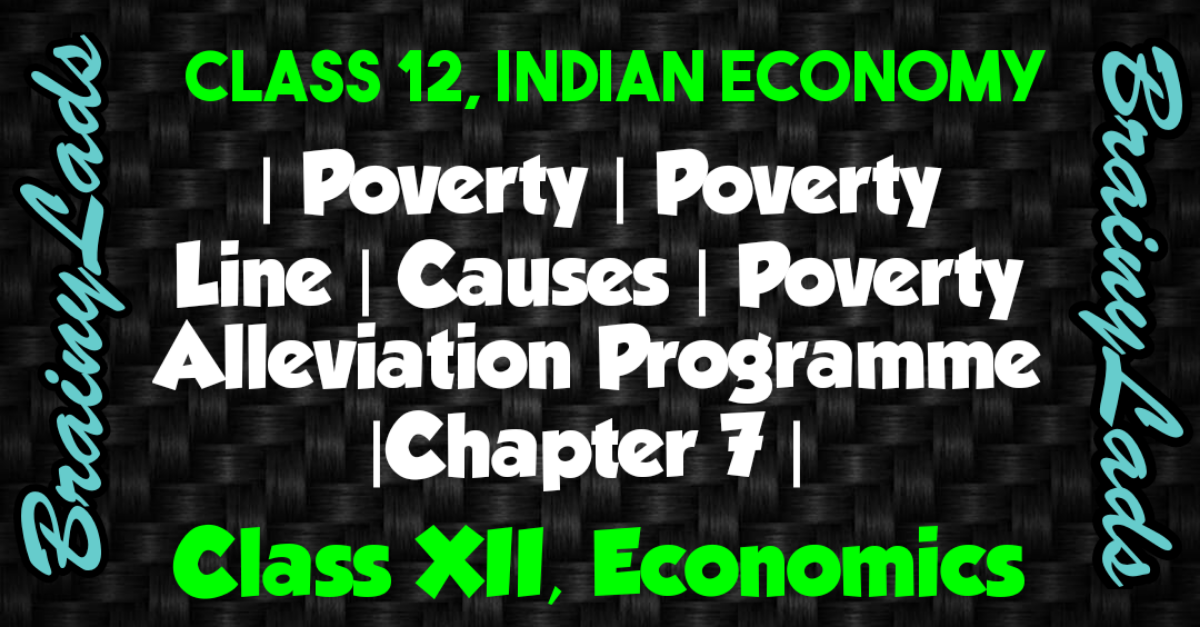Rural Development Class 12 | Objectives | Challenges | Types |
Table of Contents
Rural Development Class 12 | Objectives | Challenges | Types | Chapter 9 |
Meaning of Rural Development
Rural development refers to those action-plans which are taken for the social and economical development of the rural areas in India. These plans focus on two basic challenges of rural development which are given below after the objective.
Objectives of Rural Development
- Helps in increasing productivity of rural agricultural lands.
- Generates different alternatives for development purpose.
- Promotes education and health services in rural areas.
Challenges of Rural Development
- The lingering Challenges
- The Emerging Challenges
You may also go through other subjects like MCQs of Biology, Physics, Chemistry, Music, Accountancy, Business Studies, Economics, Geography, Political Science, Physical Education & English for Class 12 in order to have a strong hold on the subject with an intent to score higher in the first term examination.
The Lingering Challenges
- Challenge of Rural Credit: Rural credit refers to the credit facilities for farming. Credit facilities is provided to many farmers because most of the farming population is small and marginal that do not have enough money to invest in farming and the gestation period is very long. Gestation period refers to the period between sowing and harvesting the crop.
Types of Credit Need
Credit need refers to a situation wherein a farmer needs credit facilities.
There are three types of credit need by all the farmers which are as follow:
- Short-term Credit: Short-term credit is needed for the purchase of seeds, fertilizers, payment of electricity bills. Generally, the credit period of these types of loans varies from 6 to 12 months.
- Medium-term Credit: Medium-term credit is needed for the construction of fences, digging wells. Generally, the credit period of these types of loans varies from 12 months to 5 years.
- Long-term Credit: Long-term credit is needed for the purchase of land or additional lands for farming. Generally, the credit period of these types of loans varies from 5 to 20 years.
Sources of Credit
The place from where a farmer can easily take loan is known as source of credit. It consists of two types which are as follow:
- Institutional Source: Institutional sources are those sources of credit which provide credit facilities at a cheaper rate of interest such as commercial banks, cooperative societies, regional rural bank and government. Presently, around 66% of the farming population enjoys benefit of institutional source. A list of institutional source is as follow:
- Cooperative credit societies
- National Bank for Agriculture and Rural Development
- Regional Rural Bank (RRB)
- Commercial Banks.
- Non-institutional Source: Non-institutional source include village’s traders, moneylenders, landlords etc. Traditionally most of the farmer population used to take loan from them only because they did not have knowledge and institutional source required more paper work whereas non-institutional source is easy to take at any point of time.
- Challenge of Rural Marketing: Rural market is also known as agriculture market. Agriculture market refers to the market which involves the process of gathering the crop after harvesting, processing the crop, grading the crop as per the quality, packaging the crop to make it transferable, storing the packets in order to sell, selling the produced crops when the best price for the production is in the market.
Defects of Agriculture Market
- Lack of Warehouse facilities
- Distress Sale
- Multiple Middlemen
- Lack of means of transport and communication
- Standard weight and measures
Measures taken by Government in order to correct the Marketing System
- Regulation of Agriculture Market
- Formation of cooperative agricultural societies
- Facilities of Warehousing
- Minimum Support Price (MSP) policy
- Improvement in Infrastructure
- Public Distribution Policy (PDS) policy
Alternative Marketing Channel
Many types of different outlets are opened in many parts of the country which directly purchase food grain from the farmers and pack them by their own and sell to the consumers in order to get the amount of the produced goods like Big Bazaar, Apni Mandi, Rythu Bazaars etc.
Diversification in Agriculture
Diversification in agriculture refers to depending on some other types of activities other than farming to reduce the risk and to increase the income. It consists of two types.
- Diversification of Crop Production: It refers to the system of multi-cropping so that a farmer need not depend on a single type of crop.
- Diversification of Production Activity: It refers to finding some other way of employment other than farming or non-farming employment.
The Emerging Challenges
There are two principle emerging challenges which are as follow:
- Employment other than Agriculture: This is done for a sustainable livelihood. Under this, rural population includes itself in many different activities in order to get more income. Some options of sustainable livelihoods are as follow:
- Animal Husbandry
- Horticulture
- Fisheries
- Cottage and Small Scale Industries
- Challenge of Organic Farming: Organic farming refers to the technique of farming under which an ecological balance is maintained so that the production can be enhanced and fertility of soil can be restored. Under this, farmers use organic manure, chemical-free fertilisers and organic pesticides to restore the fertility of the soil and increase the quality of production.
Significance of Organic Farming
- Inexpensive technique
- Uses renewable resources
- Environmental friendly
- Better quality of food
- Labour Intensive technique
- Generates more income
Disadvantages of Organic Farming
- Less production of organic food
- Shorter shelf-life
- Involves more time
- Choices are limited.
You May Also Read Indian Economy on The Eve of Independence, Economic Planning, Agriculture Sector, Strategy of Industrial Growth, India’s Foreign Trade, Economic Reforms Since 1991, Poverty, Human Capital Formation, Rural Development, Unemployment, Environment, India China Pakistan Comparative Study for better understanding of the chapters and scoring higher in upcoming exams.
Do share this post if you liked the notes of Rural Development Class 12. For more updates, keep logging on BrainyLads



Thanks